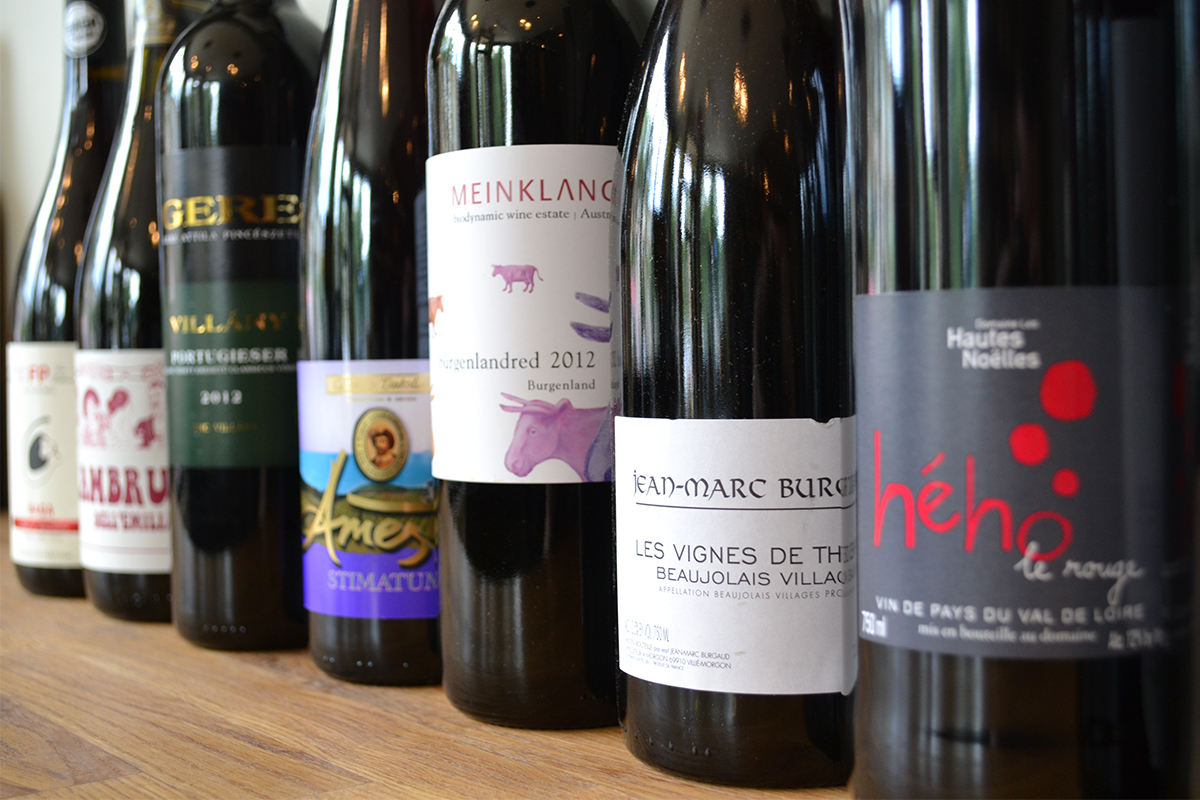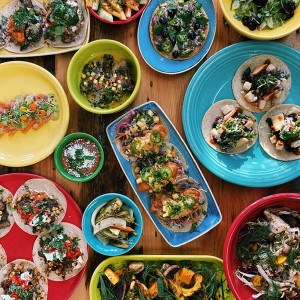Eight Chilled Red Wines for Summer

Photo by Christopher Hughes
It might be hot outside, but that doesn’t mean red wine needs to take a backseat to beer, cider, or some insipid pinot grigio. In fact, grape varietals like barbera, tempranillo, and even pinot noir hold up shockingly well below the recommended 65 degrees. That unorthodox approach might buck conventional drinking habits—and it certainly negates the purchase of that temperature-controlled, dual-zone wine fridge—but chilled reds complement grilled summer fare in a way even rosés can’t touch. Just stay away from boozy, oaky, overly tannic examples, says Michael Dupuy, owner of Streetcar Wine & Beer in Jamaica Plain. That means malbecs, merlots, and cabernet sauvignons are out, but here are eight other examples, chosen by Dupuy, that make for perfect summertime sipping.
1. Filipa Pato Baga
Origin: Bairrada, Portugal
Price: $15
Filipa Pato, the daughter of legendary Portuguese winemaker Luis Pato, makes this organic Baga, a dark-skinned varietal often used in the sparkling wines of Dao and Bairrada. “The tinto’s composition changes from year to year, but this vintage it’s about 98 percent Baga, which has a bright acidity and low tannin,” Dupuy says. “That’s the number one rule for compatible chilling, you don’t want tannin anywhere near a cold red because it’ll jump out of the glass and kill all of the subtler aromatics.”
2. Meinklang Burgenland Red
Origin: Burgenland, Austria
Price: $15
“At the Meinklang estate, they produce a bunch of different things in addition to wine, including grains, apples, and livestock. But everything they do is biodynamic, meaning that every facet of the farm is assimilated into each other. So it’s this holistic organism where the animals are grazing the land and fertilizing the vines.” Made with a traditional Austrian blend of Zweigelt, Blaufrankisch, and St. Laurent, this newcomer to the Massachusetts market has an intoxicating nose of raspberry, cherry, and wild herbs.
3. Ameztoi Stimatum Txakolina
Origin: Basque, Spain
Price: $20
The light-bodied Basque red hails from one of the most popular producers in the region. “Ameztoi’s Rubentis has really become the white whale of wine in Boston,” Dupuy says. “Everyone wants it and demand has completely outweighed supply.” Luckily the newest addition to the Ameztoi line, Stimatum, utilizes the same red grape used to make its coveted rosé. Hondarribi Beltza is a genetic relative to cabernet franc and has similar blueberry, raspberry, and violet characteristics. Like white Txakolina, this red version has a little bit of spritz, which really pushes out the aromatics and gives it a nice lift.
4. Gere Portugieser
Origin: Villány, Hungary
Price: $20
Producer Attila Gere is a specialist when it comes to the small-berry Portugieser grape, which you’ll find in different parts of Eastern Europe and Germany. Fermented in stainless steel tanks with wild yeast, Gere’s Portugieser is bursting with ripe plum and minerality. “I haven’t had a lot of Portugieser. I don’t think that should come as any surprise, but this one is delicious,” Dupuy says. “This pours very lightly in the glass, almost like a dark rosé, and drinks really well at a cooler temperature. For the longest time, there’s only been dribs and drabs of wines from Eastern Europe coming over, but not of very good quality. Now there’s a renewed interest because of the growing agritourism phenomenon.”
5. Jean-Marc Burgaud Beaujolais Villages “Les Vignes de Thulon”
Origin: Beaujolais, France
Price: $14
Made from 50-year-old vines, Jean-Marc Burgaud’s Beaujolais Villages drinks like much pricier Cru Beaujolais from Regnie. This tart, refreshing wine has notes of strawberry and rose petal. “Gamay is the archetype of a chillable red, and this particular wine is a knockout for under $15,” Dupuy says. “In France, when people don’t want to drink Bordeaux and Burgundy in the middle of summer, it’s a good Beaujolais they turn to.”
6. Venturini Baldini Lambrusco Dell’Emilia
Origin: Emilia Romagna, Italy
Price: $17
This certified organic sparkler is produced in a 150-hectare nature preserve in Italy’s Emilia Romagna region. Made in an off-dry style—unlike the sticky sweet stuff normally associated with the category—it has powdery tannins and notes of black cherry. “For me, super quaffable Lambrusco like this is what you should be drinking with pizza, whether it’s the takeout kind or from the grill,” Dupuy says. “It drinks better with pizza than beer. I know that’s controversial, but it’s absolutely true!”
7. Domaine les Hautes Noëlles “Hého” le Rouge
Origin: Loire Valley, France
Price: $12
From winemaker Serge Batard, this Loire Valley blend combines indigenous varietals cabernet franc, grolleau, and gamay. The grolleau and gamay are fermented using carbonic maceration, the same whole cluster technique used to make Beaujolais. “It’s zippy, fresh, and fun because it’s meant to be a party wine,” Dupuy says. “It looks like a party on the label and it tastes like a party. You don’t even need food necessarily. It’s the most easy going red imaginable.”
8. Orlegi Rioja
Origin: Rioja, Spain
Price: $14
Orlegi hearkens back to the traditional, fruit-forward wines of Rioja Alevesa. This lean-bodied Tempranillo is perfect for everyday drinking with hints of hibiscus, cranberry, and a nice acidic backbone. “What people don’t realize is that before the whole oak aging thing that we now associate with Rioja, the parents and grandfathers of the producers in the region were were making wines very much in the fashion of Beaujolais, with whole cluster fermentation,” Dupuy says. “They were aiming for laid-back wines to complement the cacophony of flavors in Northern Spanish cuisine, which includes a lot of spice and a lot of intense flavors.”
488 Centre St, Boston; 617-522-6416 or streetcarwines.com.


